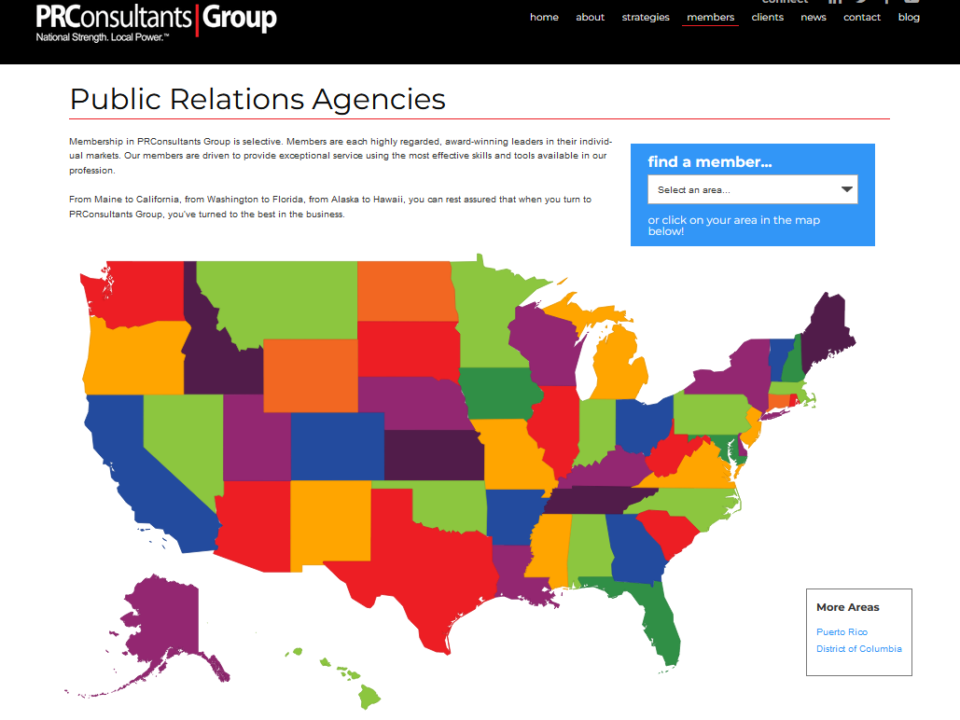
The Power of a Strong Big Idea
November 8, 2023
Kentucky PR/Mktg Firm Selected as Exclusive KY Member of National PR Consultants Group
November 20, 2023
They say showing up is half the battle. That may be true, but who wants to leave it there? Once we are in the arena, it’s how we show up and what we do next that help us win or lose the battle.
Look around you. Successful people are intentional about everything: how they are groomed and dressed, how they walk in the door, who they talk with, what they do and don’t say, and when they walk away.
To win, we must build a personal brand that is consistent with and amplifies our business brand. Does your brand motivate others to be around you and deepen their desire to work with you or help you grow business?
Here are 5 image-changing tips for enhancing your personal brand:
1. Dress and accessorize for the image you want to project.
My brother was a songwriter, musician and performer. He wasn’t normally a flashy guy, but on stage he wore a silky shirt, tight jeans and preferred to be barefooted. Whether his hair was waste length or styled short, when he flashed his boyish smile, he was hard not to like. When I asked him about his stage presence, he said, “You don’t want to look like all the people who are coming to watch you perform. You want to stand out.”
How do you want your potential fans to see you? Intelligent? Creative? The life of the party? The trusted detail person? You can choose to conform and lift up stereotypes or completely contradict them. Consider stepping a bit out of your comfort zone to stand out.
2. Prepare in advance to maximize opportunities.
So often we show up at business-social events and just respond to what’s in front of us. Or, even worse, head to the table and have a seat with friends, leaving the mingling to everyone else.
Chamber of Commerce events are a perfect example. Many businesses invite associates to represent them at dinners and other meetings. Too many people think they have accomplished their role by showing up, drinking free cocktails and eating the pre-plated chicken with sauce, mashed vegetables and dessert.
Before heading out, think about who will be at the event and how you might make a new contact, help someone meet others, and make an impression on behalf of your company. As you enter the room, stand back for a moment or two and find people on your target list to chat with, then approach them. To whom could you express appreciation? Who would value knowing about that new project they could get on board with? What colleague might be able to provide you with a reference or testimony?
3. Refresh your elevator pitch and “what’s new” comebacks.
I’m the first to admit that I’ve squandered numerous opportunities by sheer laziness at events. Here’s the scenario: a contact walks up and greets you with, “I haven’t seen you for a while, what’s new?” The battle-losing response is, “Oh, nothing much. What’s new with you?” Once I realized what I was doing (or not doing), I swore to never walk into a room unarmed with specific examples of our innovative, creative, and effective work.
Now, I say something like, “We are focused on energy, environmental and infrastructure, and have found we have a unique niche in this fascinating sector,” or “We are wrapping up an amazing project for public input, and they’ve had record-setting participation.”
Make a list of at least five things you would want people to know about your work and your team and rehearse sharing it. Then choose one of the five items to share that best relates to the person you are speaking with. It will dramatically change the dynamics of your conversation.
4. Team up to add credibility.
No one likes braggarts, so a team approach can be highly effective in meeting new people and conveying accomplishments in business social environments.
First, seek a friend who knows your work (a client or collaborator works well) and share your networking objectives. While at events, you can introduce each other to new contacts and brag about each other’s outstanding qualities.
This happened quite naturally for me when I was at a reception for a large, new business that had just established an office in our community. I introduced my client and shared that he offered innovative IT solutions for large companies that saved space, energy and down time. He, in turn, told the newcomer about how my firm had helped elevate his reputation in the community.
Email introductions also work, so there is no need to wait for an event. People appreciate the opportunity to help connect people they respect with each other, and it’s great to be able to return the favor down the road.
5. Walk away sooner than later and follow up.
Okay, this section might have two tips, but they work together. In most situations, the first meeting should be kept fairly light in tone and short in duration. After all, no one wants to hang out as the natural chatter dies or listen to someone ramble on. The rule of thumb is about 5 minutes, then move on. We teach a technique for gracefully moving on in our seminar “From Cocktails to Customers.” It doesn’t involve what I call the “squirrel” technique one lobbyist I know uses that mimics Doug the Dog in the animated movie “Up.” Running from important person to important person is not the impression we want to leave.
A component of the parting should include some type of follow up promise. It could be as simple as reaching out through LinkedIn, inviting them to a program you are hosting, or simply emailing them to ensure they have your contact information. If a bigger opportunity presented itself during the conversation, such as a sincere interest in your services, ask them how they’d like you to follow up, then do it.
Who we are is usually more interesting than what we do, so share bits of information about your personality as well as your professional talent. Likability is one of the strongest magnets in the sales dance, so share some of the most interesting things about yourself to attract others to you.
Be intentionally you and let your personal brand shine.



